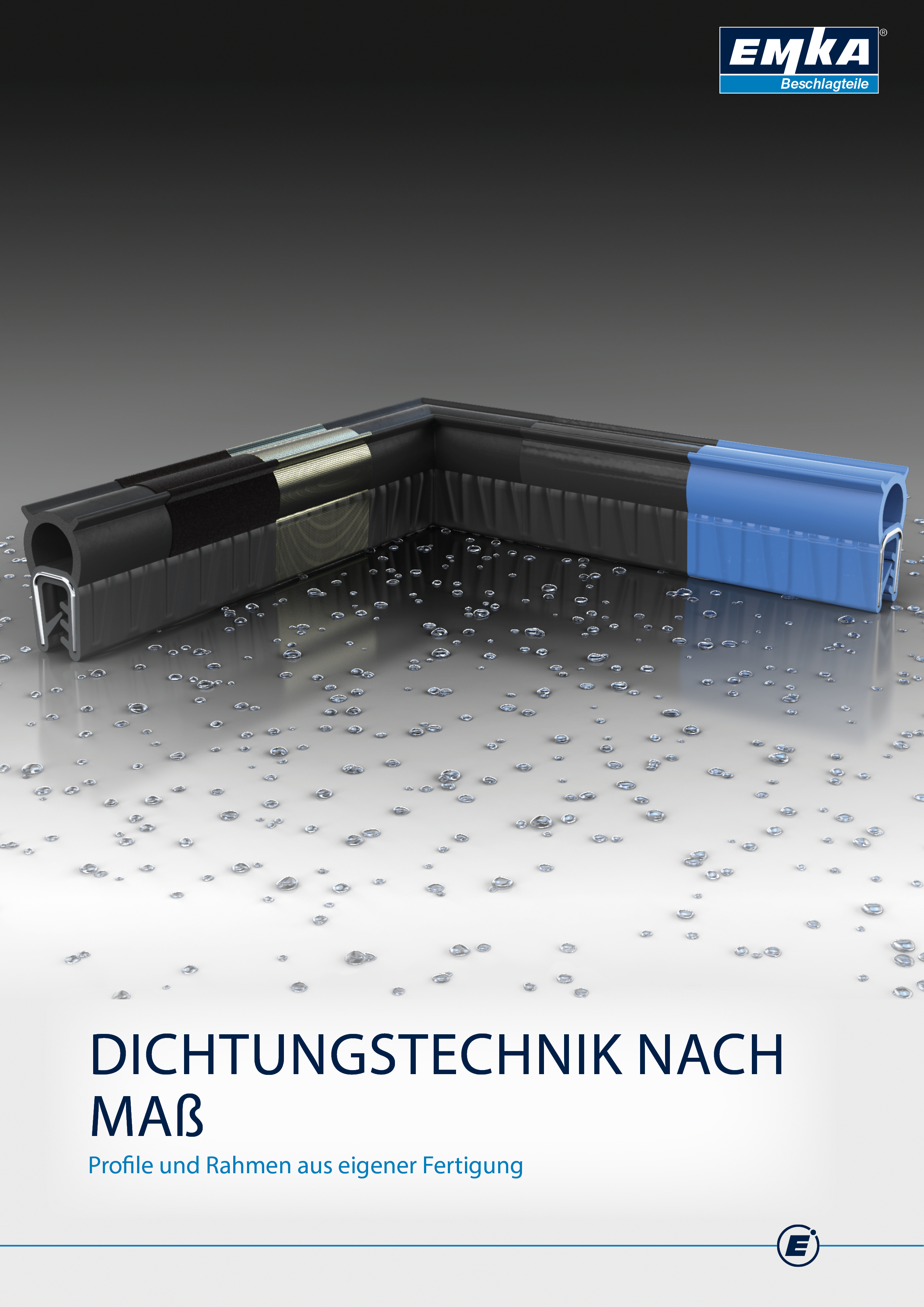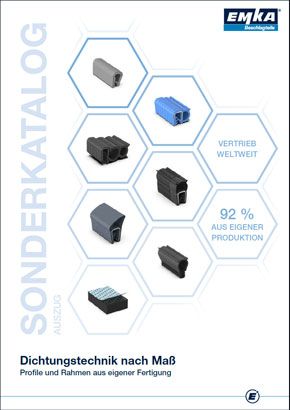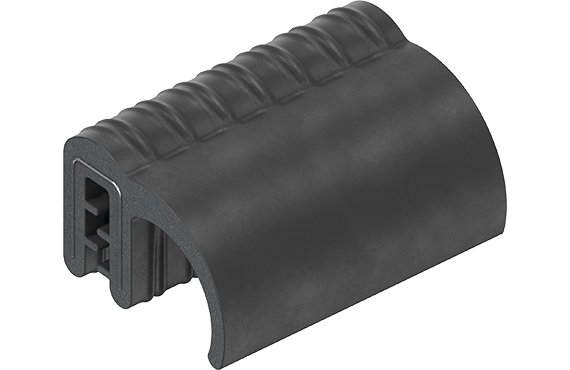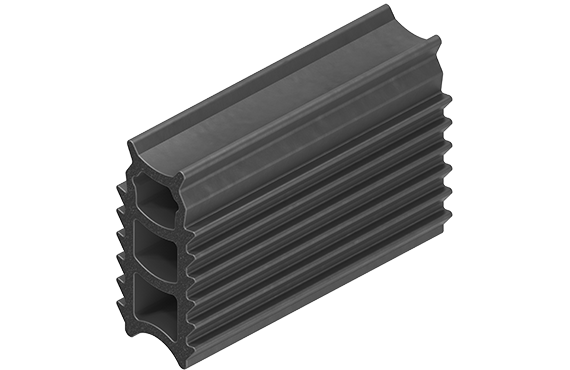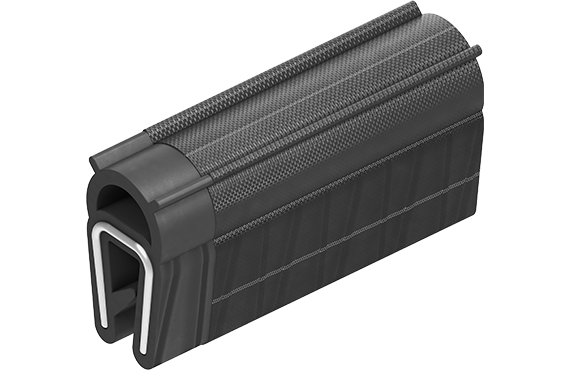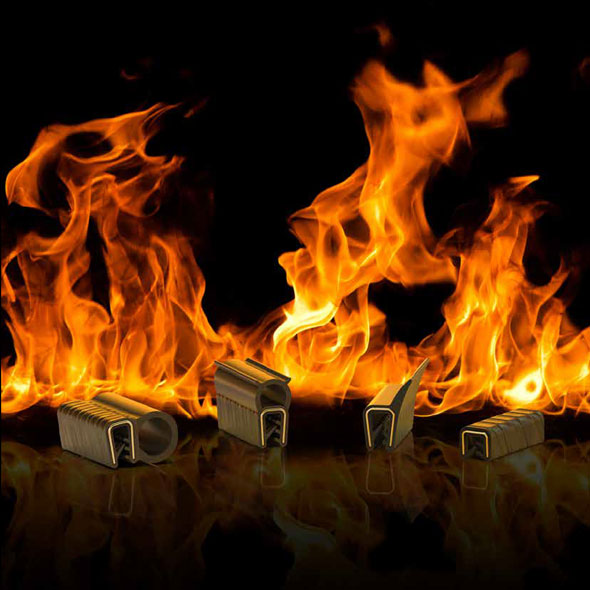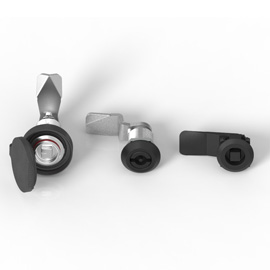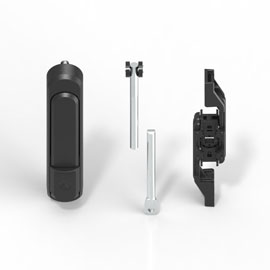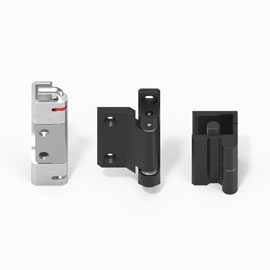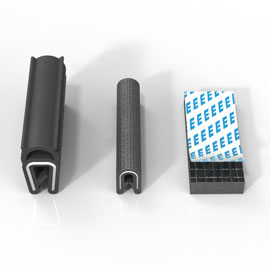Sealing technology - The black art
At first glance, a seal is rather inconspicuous. Yet it has an important function, because it ensures that substances do not pass unintentionally from one room to another. Sealing profiles protect interiors from moisture, dust and dirt, among other things. Soft, elastic materials are mainly used here, which is why we usually speak of sealing profiles or elastomers or simply rubber.

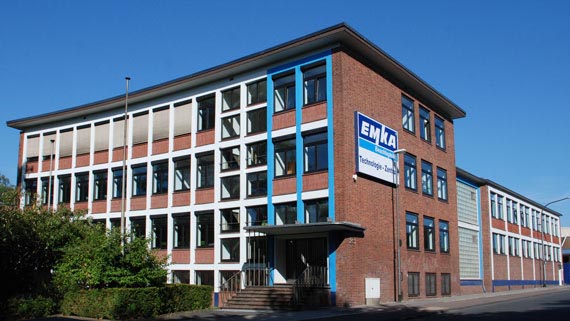
From the idea to the product
In addition to standard seals, EMKA also offers individual production according to customer drawings. Our in-house specialists also develop, together with the requirements and ideas of the customers, tailor-made unique products for the highest and most extraordinary demands. EMKA's own tool and mould construction offers unique possibilities. State-of-the-art development, production and testing processes ensure the highest level of product quality and reliability.
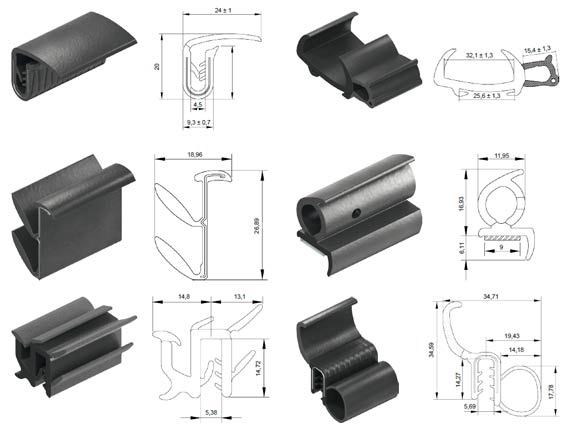
Know-how guarantees top quality
Sealing technology is one of EMKA's core businesses. The company is an expert in the extrusion of rubber and plastic profiles with its own production plants in Spain and England. EMKA manufactures more than 1,500 seals and rubber profiles from various materials as catalogue standard as well as countless individual customer solutions after detailed consultation with our sealing experts. On request, EMKA supplies its quality goods from its own production with the corresponding certification or with test plates for further testing at the customer's premises.
Customers benefit from EMKA's unique depth of production:
- individual consulting and needs analysis by EMKA experts
- own product development by our specialists with solutions for customer requirements
- In-house toolmaking for extrusion tools
- own production in England and Spain
- Quality control with testing and certification
- worldwide distribution
EMKA's sealing know-how guarantees top quality!

Sealing technology from EMKA
A tested and safe system
If a seal is used, standards play an essential role for the proof of quality (also country-specific). EMKA seals meet the fire protection standard DIN EN 45545-2 or VDI 6022 as well as the UL standards (Underwriters Laboratories) for safety. This means that they can also be used in the USA.
The compliance with special quality characteristics of EMKA sealing technology for the most diverse industrial sectors (automotive, window construction, chemical, railway, refrigeration and air-conditioning technology, etc.) can be verified by our own testing facilities and laboratories. The EMKA production sites for sealing technology are certified according to the following standards:
- ISO 9001:2008
- ISO 14001:2009
- IATF 16949:2016
The so-called IP protection classes define the extent to which an electrical component or enclosure can be exposed to environmental influences without being damaged or posing a safety risk. EMKA carries out IP tests and other physical tests in its laboratories.
Rubber seals "Made in Europe
Quality, economic efficiency and a large vertical range of manufacture are part of EMKA's company philosophy. With its own production "Made in Europe", EMKA is always in a position to produce rubber profiles, carrier profiles, hollow chamber seals and lip seals in a wide range of hardnesses. Loop and roll cut tape, punched steel and textile thread reinforcements can be incorporated. In the further processing of the rubber seals, EMKA offers the possibility of producing fixed lengths, rings and corner frames individually according to customer requirements.
The application of adhesive tape, sliding varnish or flocking completes the range of sealing profiles. Special coatings for electro-magnetic compatibility (EMC seals) round off the programme.
The rubber seal in the EMKA catalogue
In our gaskets and rubber profiles catalogue you can find detailed information about the standard products. Further catalogues with chapters on special rubber seals can be found here.
- Rubber seals for industrial cabinet and enclosure construction
- Rubber seals especially for the Transport Road sector
- Rubber seals especially for the Transport Rail sector
- Catalogue Sealing Technology
- Flyer Sealing profiles made to measure from our own production
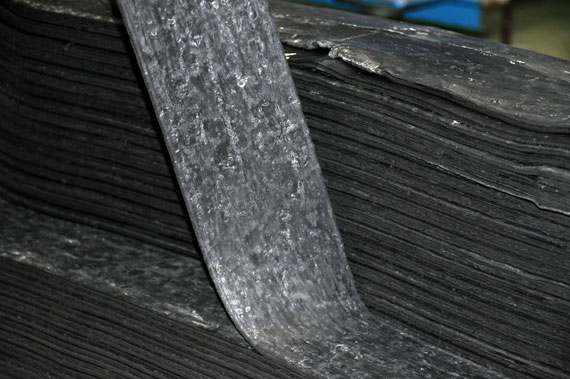
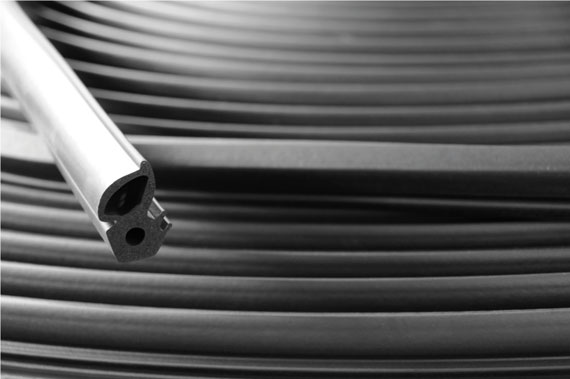
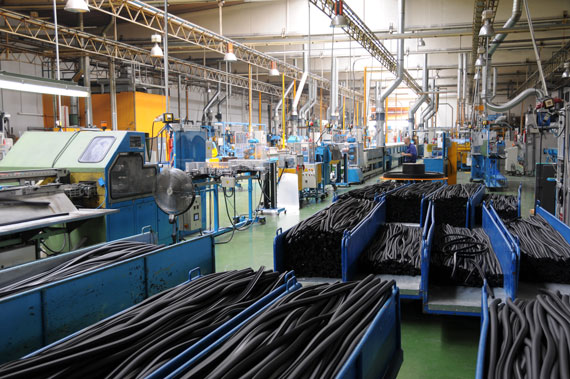
Basics of sealing technology
On this page we provide an overview of the topic of rubber sealing from a technical point of view. We present various materials, material properties, advantages and areas of application in this context.
Material characteristics: what are rubber profiles made of?
In addition to the raw material, many properties influence the function and quality of the seal: including elasticity, residual compression and resistance to chemicals and heat.
Polymers
The basis for the production of rubber profiles are polymers, which can be divided into three main groups:
- Elastomers
- thermoplastics
- thermoplastic elastomers.
Elastomers made from rubber
Rubber is the main raw material for the production of the following elastomers:
- Ethylene propylene rubber (EPDM)
- Nitrile rubber (NBR)
- Chloroprene rubber (CR)
The plastic rubber compound is mixed with various additives and heated. During this chemical-physical process of vulcanisation, the molecular chains of the rubber bond with each other. This gives the material its rubber-like elasticity.
Depending on the requirements and the area of application, the right choice of materials is crucial for the entire sealing system to function later on.
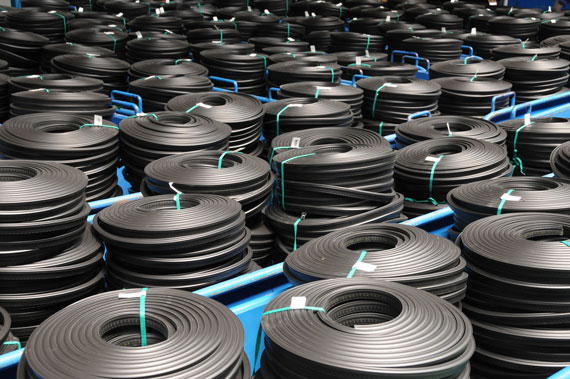
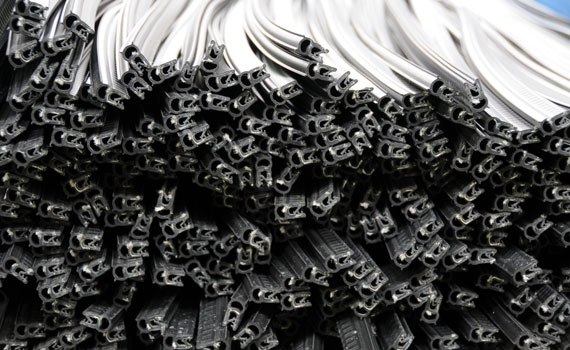
EPDM seal: resistant and durable
In switch cabinet construction as well as in the areas of transport (rail and road) and air conditioning (HVAC), the synthetic rubber EPDM from the field of elastomers is predominantly used.
What is EPDM?
EPDM (ethylene propylene diene rubber) is synthetic, i.e. artificial rubber, which is characterised by good hot water, water vapour, ageing and weathering resistance as well as a wide thermal application range from -35 °c to +130 °c.
What are the advantages of EPDM?
EPDM ...
- has excellent water, oxygen, UV and ozone resistance
- is available in a large number of different compounds, cross-sections and Shore hardnesses
- is resistant to acids and alkalis, but less so to mineral oils
- an be used as sponge rubber when mixed with a blowing agent
- is flame retardant in certain compounds and can be used as a fire protection sealant
- Significant cost savings compared to silicone gaskets
What is a rubber gasket made of EPDM used for?
The synthetic rubber EPDM is used to produce seals in numerous formulations and hardnesses. As EPDM soft rubber, it is often used in the clamping area reinforced with wire mesh and also serves as edge protection. In the sealing area, EPDM is used with a blowing agent as an easily deformable sponge rubber.
Fire protection-tested seals made of special EPDM fire protection compounds are used, for example, in rail vehicles.
NBR
The nitrile rubber NBR - also an elastomer - is better suited for contact with mineral oils and greases than seals made of EPDM. However, NBR offers less resistance to UV and ozone. The thermal application range for an NBR seal is between -30 °C and +100 °C, and briefly up to +130 °C, depending on the composition of the compound. At higher temperatures, however, the material also known under the brand name "Perbunan" hardens.
CR
Chloroprene rubber (CR) is also a synthetic rubber. EMKA produces the flame-retardant elastomer known under the brand name "Neoprene" in self-extinguishing compounds. CR has good resistance to ozone and weathering and is used in environments between -25 °C and +90 °C.
Silicon
The transparent and thus very easily colourable polymer is used at EMKA as silicone rubber. It has excellent chemical resistance and is so weather-resistant that it remains flexible even in the coldest conditions. Silicone achieves higher fire protection classes than EPDM or CR and meets the highest hygiene guidelines. EMKA offers standard qualities for temperatures between -60°C and 200°C. For special compounds, silicone can achieve a temperature resistance of up to 300°C.
PVC
Unlike EPDM, polyvinyl chloride (PVC) is not an elastomer but a thermoplastic polymer that is often used purely as edge protection with an embedded metal framework. It also has very good weather resistance and can be used in temperatures between -40 °C and +90 °C. Together with a bonded EPDM sealing profile, a combination profile is created.
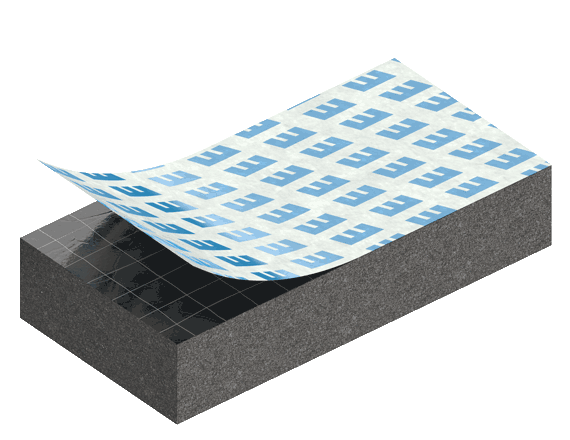

Foam rubber seal: Air bubbles improve the properties
"Our sealing profiles for the control cabinet often consist of a so-called clamping area with an embedded metal core and a sealing element made of foam rubber," explains the technical consultant for sealing technology at EMKA. After stretching or compression, the soft elastomer returns approximately to its original state. Many tolerances on control cabinet doors and control boxes can be bridged in this way.
What are the technical properties of foam rubber?
Foam rubber is an elastomer made from EPDM, NBR or CR. During vulcanisation, chemical blowing agents create small air bubbles that inflate the material. The result is a structure with predominantly open cells and a dense outer skin.
What are the advantages of a foam rubber seal?
The advantages of foam rubber in the field of sealing technology are its high pressure elasticity and good resilience. For EMKA, foam rubber is therefore an important material for offering cabinet doors and flaps not only for control cabinet construction, but also for a wide range of industries and applications. Individual solutions developed together with the customer are playing an increasingly important role in EMKA's overall sales of "seals".
Sealing technology, locking technology and hinge technology from a single source
As a system supplier for industrial enclosure construction, EMKA sees itself as a problem solver in order to develop an economically sensible approach to opening, closing and sealing the enclosure together with the customer. To this end, the wide portfolio of closures and hinges go hand in hand with EMKA's individually tailored sealing systems.
Customers benefit from a customised seal, which EMKA offers vulcanised as a frame or ring. In addition to a simplified and quick assembly, this ensures that the joints of the corners and the rings are permanently tight and closed.
"EMKA is not just a supplier," EMKA's specialist for sealing technology emphasises. "We develop concepts together with the customer and offer system solutions." Thus, in addition to the seal, the expert also takes into account the closure technology, hinge technology and the material and design of the enclosure. In doing so, EMKA draws on a broad portfolio of existing sealing materials.
EMKA does not rely exclusively on its core sector of industrial cabinet construction, but is also making inroads into other sectors. The expert for closures and seals now supplies its high-quality products just as successfully to the air-conditioning industry for ventilation and air-conditioning systems as it does to the transport industry for closing and sealing the flaps and doors of motorhomes and trailers.
Contact our consultants and benefit from our expert knowledge! We have the right solution for every application.
Profiles made of fire protection compound
EMKA processes materials which are certified according to currently valid fire protection standards for rail vehicles.
e.g. according to DIN EN 45545-2, ASTM E1354, ASTM E662, ASTM C1166, BSS 7239, SMP 800C.
Whether the achieved categories fit to the respective requirements or vehicle classes has to be verified for the individual case.
Product advantages of profiles made of EPDM fire protection compound:
- Flame retardant for more safety
- Significant cost savings compared to silicone seals
- Readily customised frames and rings according to customer specifications possible
- Profile geometry also individually according to customer requirements
- Reliable top quality from in-house production in Europe



